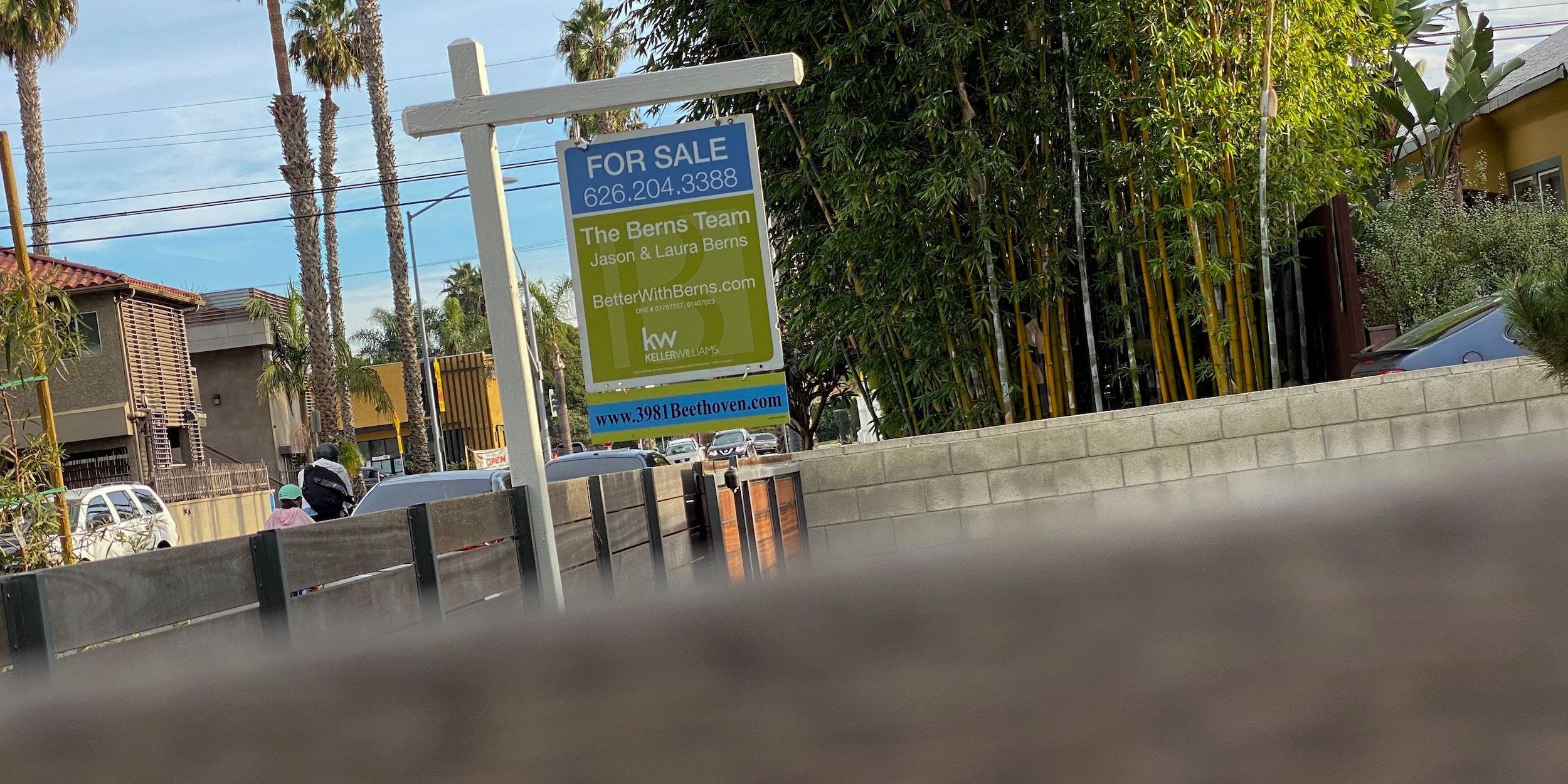
Chris Delmas/AFP/Getty Images
- US home prices rose 12.2% year-over-year in February, the Federal Housing Finance Agency said.
- That's the fastest yearly gain on record and represents a $35,000 jump in the median home sale price.
- Also in February, the S&P CoreLogic Case-Shiller index had its largest one-year price jump since 2006.
- See more stories on Insider's business page.
Homeowners, rejoice. Potential buyers, lament.
US home prices surged 12.2% year-over-year in February, up 0.9 points from the previous month's reading, the Federal Housing Finance Agency said on Tuesday. That's the fastest price appreciation on record and an increase of $35,000 to the median selling price for homes just a year ago. The increase follows a one-point gain in January.
Year-over-year price growth was strongest in the Mountain region – which includes Wyoming, Colorado, Utah, Arizona, and New Mexico – at 15.4%. Home inflation was weakest in the West North Central division – which includes Iowa, Nebraska, Kansas, and Missouri – at a still considerable 10.5%.
It's the latest datapoint showing a massive boom for the US housing market, spurred early in the pandemic by low mortgage rates, along with a broad migration from cities to suburbs. The S&P Case-Shiller home-price index, for instance, rose in February to a 12% year-over-year gain, according to a Tuesday release. That's the strongest reading in the index since 2006 and reflects rising prices across all 20 of the metropolitan areas tracked by the index.
Separately, CoreLogic's own price index showed a 10.4% year-over-year price jump in February. That was also the gauge's largest one-year bounce since 2006.
But what began as months of soaring sales growth has since run up against record-low supply. Shortages throughout the US have led owners to demand more for their homes, which has cut away at affordability just as the US economy is recovering. In the latest sign of just how hot the market is, Americans are now spending more on existing single-family homes than new construction as they rush to scoop up any available units.
These inventory pressures could soon be alleviated by a bounceback in construction. Home starts climbed to their highest point since 2006 in March as contractors rushed to fill the gap between supply and demand. Building permits also rose last month.
Still, economists expect the housing market to continue rallying through the year, albeit at a more moderate pace. Demand for homes is likely to hold strong; nearly 9% of Americans plan to buy a home over the next six months, according to The Conference Board. That's the highest share since 1987. And as mortgage rates, which recently dropped back below 3%, hover at historically low levels, a rebound in construction could give way to a more sustainable market boom.
"With supply improving from new construction and more homes likely being listed to capitalize on elevated home prices and vaccine availability, we see home price appreciation moderating," Jefferies economists said in an April note.
